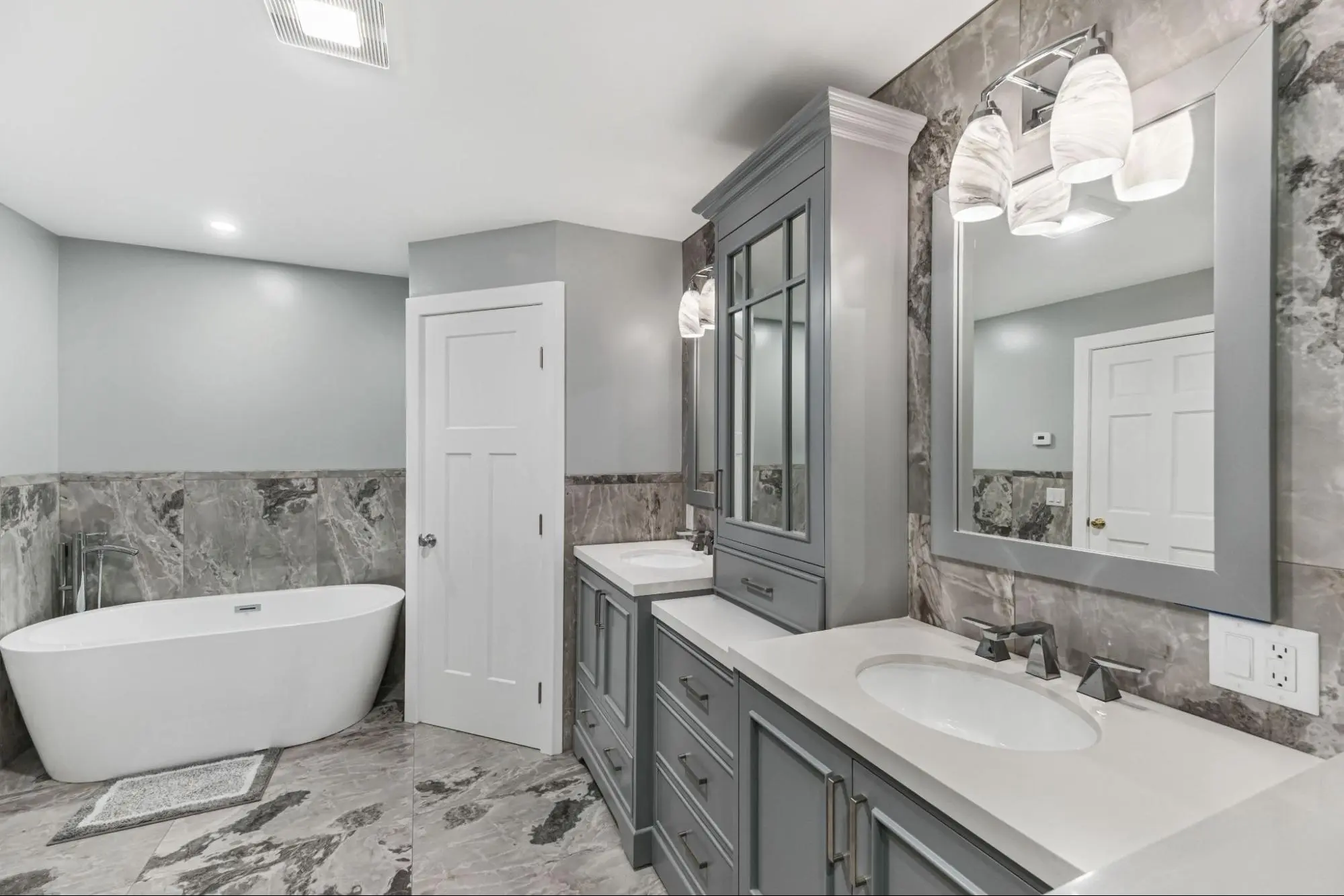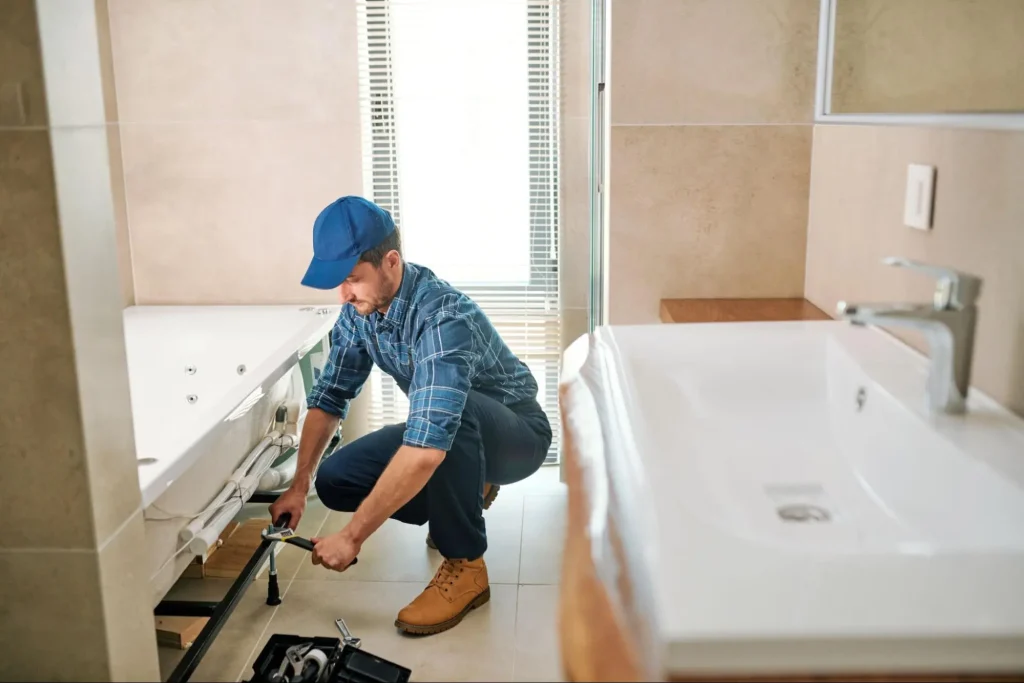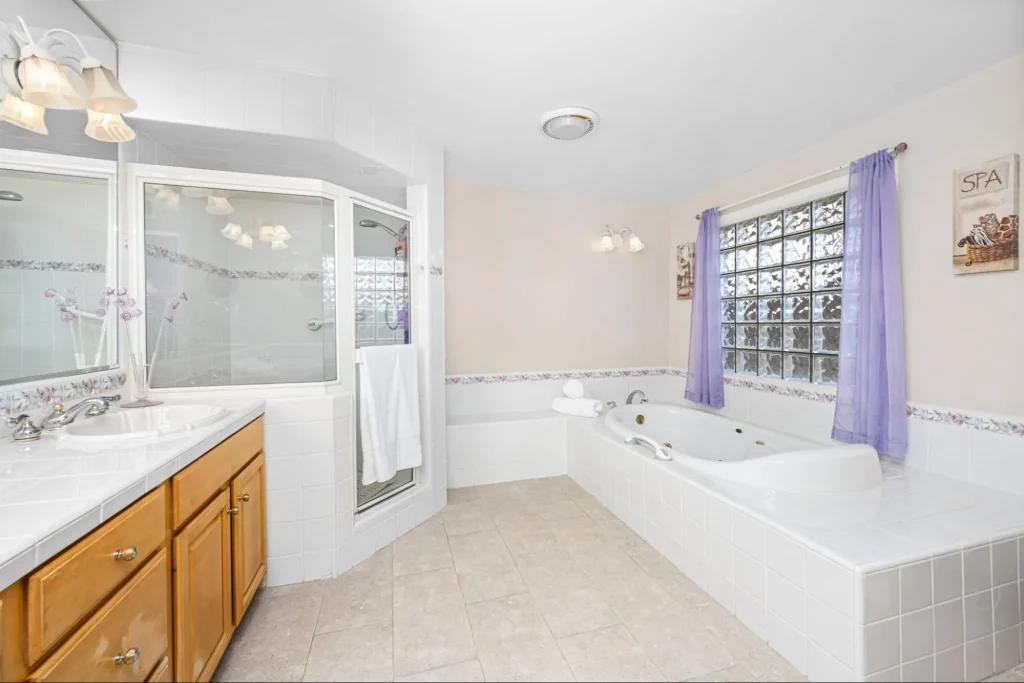
Before diving into your bathroom remodel, it’s crucial to have a solid plan in place. Creating an essential checklist will save you time, money, and unnecessary stress. Start by identifying your big-picture goal; decide whether you’re looking for a complete overhaul or just a few updates to modernize your space.
Your priorities should guide your planning process. Think about the elements that matter most, such as storage, lighting, or plumbing improvements. Once you have a clear vision, setting a realistic budget and finding reputable contractors will keep your project on track and within your financial means.
Preparing for the physical work can be daunting but manageable with proper preparation. Make sure you have detailed designs and all necessary permits ready. This stage sets the foundation for a smooth installation and finishing process, ensuring your dream bathroom becomes a reality.
Proper planning and design are crucial for a successful bathroom remodel. Focus on defining your vision, selecting the right materials and fixtures, and creating a realistic timeline.
Start by setting a clear vision for your bathroom remodel. Think about the design style you prefer, such as modern, traditional, or rustic.
Create a Pinterest board or collect pictures that inspire you. Decide on the bathroom layout and consider elements like fixtures, the position of the shower or tub, and storage solutions. Detail every aspect, such as the color palette, lighting, and even the type of tiles you want. Knowing your vision will guide other decisions and keep the project on track.
Choosing the right materials and fixtures is essential.
Tiles are a popular choice for walls and floors, offering durability and ease of cleaning. Consider options like ceramic, porcelain, or natural stone. For the walls, you might prefer paint or wallpaper that complements your tiles. Fixtures such as faucets, mirrors, and lighting play a significant role in both functionality and aesthetics. Ensure your faucet and showerhead match your design style. Opt for energy-efficient lighting and consider underfloor heating for added comfort. Don’t forget to select storage solutions that maximize space, like cabinets or shelves.
Creating a timeline helps manage the project’s scope and deadlines. Start by listing all tasks, from demolition to final touches.
Estimate the time each task will take, adding buffer time for unexpected delays. Coordinate with contractors to align schedules and confirm availability. A typical bathroom remodel can range from 2 to 6 weeks, depending on the project’s size and complexity. Prioritize critical tasks like plumbing and electrical work before moving on to tiling and fixtures. Document the timeline and regularly review it to ensure everything stays on schedule. Having a clear timeline helps avoid costly delays and keeps the project on track.
Planning your bathroom remodel starts with careful budgeting and selecting the right professionals. This ensures that your project stays on track and meets your expectations.
Decide on a clear budget before beginning your bathroom remodel. To do this, list all potential costs including materials, labor, permits, and emergency funds for unexpected expenses.
Getting multiple quotes from different contractors can help you find the average cost. This will give you a realistic budget figure.
Allocate funds for high-quality materials where necessary. Cheaper materials might look appealing, but they can cost more in the long run if they need frequent replacement.
Key items to budget for:
Remember, a well-planned budget can prevent overspending and ensure your remodel meets your needs.
Hire licensed and insured professionals to avoid potential risks. Check their certifications and previous work to gauge the quality of work they deliver.
Essential steps when hiring:
Choosing the right professionals will help you avoid delays and costly mistakes. An experienced contractor can provide valuable insights and make your remodel smoother and more efficient.

Before you start any bathroom remodel, it’s crucial to prepare thoroughly. This involves tearing down the old bathroom and addressing essential plumbing and electrical systems to avoid future issues.
Begin by removing all fixtures such as sinks, toilets, and bathtubs. Ensure the water supply is turned off to avoid leaks during this process. This prevents costly accidents and damage.
Next, carefully remove old tiles, drywall, and any subflooring. Wear protective gear to avoid injuries from debris and dust. Dust can settle everywhere, so consider using plastic sheeting to cover surfaces and prevent dust spread.
Pay attention to the framing and structural supports. Inspect for any signs of rot or damage, and replace them if necessary. Proper framing is essential for the stability of your new bathroom.
Turn off the main water supply before working on the plumbing. Inspect and update pipes if they are outdated or damaged. This is a good time to install new plumbing for additional fixtures or features.
When it comes to electrical work, ensure the power is off at the breaker box. Upgrade old wiring to meet current safety standards. Install new switches, light switch covers, and outlets in appropriate locations.
Plan your layout to include adequate lighting and if necessary, install new circuits to handle increased electrical loads. Properly addressing both plumbing and electrical needs upfront will save time and money in the long run. Neglecting these steps can lead to serious issues later.

The final stages of your bathroom remodel involve installing essential fixtures and adding the last details that will complete the space. These steps ensure both functionality and aesthetic appeal.
Begin by installing the vanity, sink, and faucets. Ensure the cabinets and storage units are securely mounted. Attach the shower head and shower door, and place the toilet and bathtub in their designated spots. It’s essential to properly connect all plumbing to prevent leaks.Next, focus on the lighting. Install overhead lights, dimmer switches, and smart mirror lighting. Add ventilation by installing an exhaust fan to keep moisture levels in check. Lay down flooring like tile or vinyl, ensuring that tile and grout work is sealed correctly to avoid water damage. Include accessories like a heated towel rack and shiplap walls for added luxury.
After all fixtures are in place, conduct a thorough inspection. Check for any plumbing leaks around the sink, faucets, and toilet. Test all electrical installations, including lights, dimmer switches, and any integrated television setup.
Ensure the shower head has the correct water pressure and that the shower door seals properly. Pay attention to finishes like caulking around the bathtub and sink areas. Confirm that all mirrors are securely hung and that the countertops are free of scratches. Finish by adding final touches like knobs on cabinets and fresh grout if needed. Inspect and clean each part for a spotless, polished look.
Starting a bathroom remodel can be a big task, but careful planning can make it easier.
First, assess your needs. Determine if you want a full overhaul or just an update. Identify key areas you want to focus on, such as showers, sinks, or flooring.
Budgeting is crucial. Plan how much you can spend. This will guide your choices and help you avoid overspending. Think about your design preferences. Do you like a modern look or something more traditional? Sites like Pinterest are great for gathering ideas.
Materials are important. Choose durable and water-resistant options for the bathroom. Tile, granite, and quartz are popular choices.
Hiring the right professionals can make or break your project. Look for local contractors with good reviews. Kaminskiy Care and Repair offers remarkable bathroom remodeling ideas and services that will guarantee you peace of mind.
Finally, timing matters. Set a timeline for each stage of your remodel. This helps keep you on track and ensures the project finishes on time. By focusing on these key areas, you can achieve a successful bathroom remodel.
First, create a detailed plan and budget. This should include design ideas, a list of required materials, and an estimated timeline. Get quotes from contractors and decide if you need permits.
Consider durable and water-resistant materials. Ceramic or porcelain tiles are popular for floors and walls. Quartz and granite are good choices for countertops. Choose moisture-resistant paint and high-quality fixtures to ensure longevity.
Focus on durability, style, and functionality. Ensure fixtures match your overall design theme. Consider water-saving features for faucets, showerheads, and toilets. Look for quality brands that offer good warranties.
Set a realistic budget based on your financial situation and the scope of work. Include costs for materials, labor, permits, and unexpected expenses. Track your spending closely and adjust your plan as needed.